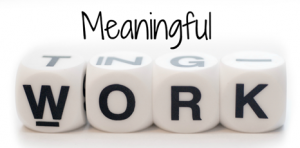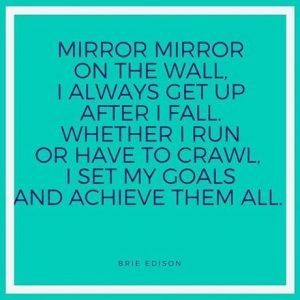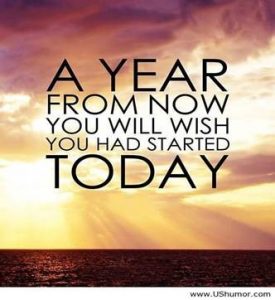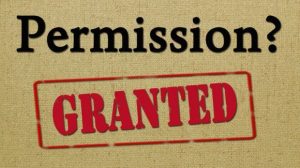Ideas for Improving Psychological Safety
 Imagine a work environment where every team member feels comfortable sharing their opinions and ideas.
Imagine a work environment where every team member feels comfortable sharing their opinions and ideas.
- An environment where people feel like they can learn from their mistakes and not humiliated.
- An environment where disagreements and open discussions are encouraged and not seen as a threat.
Perhaps you already work in an office like this and you probably feel grateful for it! However, if you’re like many, it could feel like a dream that will never come true. That’s because many organizations have difficulty developing and maintaining a strong sense of psychological safety for their team members. As we discussed in our last article, psychological safety is about being able to act and engage in a team without fear of negative consequences. It’s one of the strongest proven predictors of team effectiveness.
It takes great leadership and management to create psychological safety. But if you feel like it’s lacking in your organization, what are a few first steps you can take to improve it? Here are some ideas to get started:
- Practice accountability and lead by example: Leaders set the tone for an organization and are responsible for the psychological safety of the workplace. Leaders should be approachable, be open to opinions that differ from their own and be willing to acknowledge their own mistakes (just to name a few).
- Enhance communication skills: For example, ask team members directly for their thoughts and opinions. Encourage people to share by asking questions. Actively ask quieter individuals for their input. Also, practice active listening by leaving your phone on your desk during meetings and improving eye contact.
- Hone conflict resolution skills: No one likes to deal with conflict, but when you’re leading a team, it’s inevitable. If a team member humiliates or undermines others or prevents team members from speaking up, leaders have to be ready to intervene. Just one or two negative people can really put a damper on overall company culture.
- Foster open conversations with team members: It’s vital to pay attention to how your team operates. Do some people dominate during meetings? Are some more quiet and seem reluctant to participate? Make an effort to enable equal speaking time for everyone. A calm environment and perhaps some ice breakers are just a few ways to put everyone at ease. Team outings or even virtual hangouts can also provide an opportunity for team members to let their guard down and get to know each other better.
Saying you encourage your team to speak up and be candid is one thing, but creating a culture of trust is another. It takes care, consistency and a commitment to learning new behaviors, but the payoff is worth it! Fortunately, you don’t have to do it alone. Leah M. Joppy and Associates is ready to help with fresh ideas and strategies to help you increase psychological safety within your organization. Call us at 301-670-0051 or email us at leah@lmja.com and let’s start 2023 off on a productive note!
Psychological Meaningfulness
 Most of us spend the majority of our week at the office, yet how many of us find our job to be meaningful? It can feel like a pipe dream to find work that makes us feel fulfilled and motivated. And the numbers back this up: according to a study by Bates College and Gallup, over 80% of college-educated Americans aspire to meaningful work, yet less than 50% actually attain it. This isn’t good news for organizations, as a lack of employee engagement and perceived meaninglessness leads to decreased productivity, lower morale and greater turnover
Most of us spend the majority of our week at the office, yet how many of us find our job to be meaningful? It can feel like a pipe dream to find work that makes us feel fulfilled and motivated. And the numbers back this up: according to a study by Bates College and Gallup, over 80% of college-educated Americans aspire to meaningful work, yet less than 50% actually attain it. This isn’t good news for organizations, as a lack of employee engagement and perceived meaninglessness leads to decreased productivity, lower morale and greater turnover
I just recently completed a certification from Cornell University on Diversity, Equity and Inclusion. The course, taught by Professor Nishii, takes a deep dive into the issue of employee engagement and it’s three components. We examined psychological availability last month and this month we’re taking a look at the second component: psychological meaningfulness.
What Is Psychological Meaningfulness?
What do we mean by the term “psychological meaningfulness”? Organizational psychologist William Kahn, author of the 1990 study “Physical Conditions of Personal Engagement and Disengagement at Work”, defined it as “employees perceiving their role/task as meaningful, both to the organization and within the context of wider society, to justify their “full self” being deployed.” Team members feel motivated within their positions due to challenge, opportunities for autonomy and strong goals. They feel like they’re a part of something larger than themselves.
What Psychological Meaningfulness Looks Like – and Steps to Avoid
There is no one-size-fits-all approach to meaningful work. It differs from person to person and often changes as people age, go through periods of personal change and have various life experiences. But we can agree that once a sense of meaningfulness is found, it brings about a greater sense of pride and achievement, a feeling of fulfillment and a satisfaction in finding work that is absorbing and interesting. And while there’s no magic formula for creating meaningful positions, there are definite steps that organizations don’t want to take. Here are 6 of the most common mistakes:
- Failing to recognize and appreciate team members’ contributions
- Creating a disconnect between organization and personal values
- Treating team members unfairly
- Overriding team members’ judgment and making them feel disempowered
- Creating a disconnect between team members
- Putting team members in situations where they feel unsafe
Most organizations don’t know where to begin when it comes to helping their employees find more meaning in their positions and increase overall engagement. The typical “office perks” are often surface level and don’t delve into the root issues. That’s where Leah M Joppy and Associates can help. A fresh approach and perspective, combined with experience tackling all different types of employee disengagement issues is just what you need to start next year off on a positive note! Call us at 301-670-0051 or email us at leah@lmja.com today.
A Word For An Unsettled Environment
 Chances are, you’ve probably heard or read the acronym ‘VUCA’ (Volatility, Uncertainty, Complexity, Ambiguity) thrown around a time or two. It’s one of those buzz-worthy terms to describe the unsettled environment organizations have to deal with on a daily basis. And nothing has brought out VUCA more than the past few years, as organizations have dealt with unprecedented changes in day-to-day operations and had to pivot in unexpected ways.
Chances are, you’ve probably heard or read the acronym ‘VUCA’ (Volatility, Uncertainty, Complexity, Ambiguity) thrown around a time or two. It’s one of those buzz-worthy terms to describe the unsettled environment organizations have to deal with on a daily basis. And nothing has brought out VUCA more than the past few years, as organizations have dealt with unprecedented changes in day-to-day operations and had to pivot in unexpected ways.
The acronym ‘VUCA’ was first used in 1987 by the U.S Army War College to describe the unfortunate situation after the Cold War. The term later found its way into the business world and outlines four distinct challenges that leaders face:
Volatility: Challenges are unstable and unexpected. The duration of these challenges is unknown.
Uncertainty: The future is unpredictable. It’s nearly impossible to anticipate events and how they’ll unfold.
Complexity: Information is overwhelming and choosing a single right path is almost impossible. Challenges and their repercussions are more complex and harder to understand.
Ambiguity: Situations are vague and difficult to interpret.
In short, we’re living in a world that’s constantly changing and these changes, whether big or small, are happening faster and faster and in more unpredictable ways. Since we don’t have a crystal ball to see the future, the best way for an organization to be prepared is through strong leadership. As we saw over the past few years, change can be incredibly challenging for team members with people reacting to these changes in different ways. Skilled, prepared leaders are the key to meeting the challenges of VUCA head-on through:
- Maintaining strong lines of communication
- Keeping employees engaged
- Determining fresh and creative approaches to meet changes head-on
- Maintaining and growing productivity
And that’s just the start. It’s a tall order for even the most seasoned leader and one where they’ll need a strong level of support from upper management.
As much as we’d like to make time stand still for a bit and catch our breath, change and the challenges that accompany it, is inevitable. We don’t know exactly what changes are coming down the road, but working with a coach, like Leah M Joppy and Associates, can help your organization be prepared when they do happen. We can take a look at what challenges your organization has faced in the past, how your leadership team handled them, what worked and what didn’t. We can then work with you to improve approaches and develop creative and flexible solutions that will help make this VUCA world we’re living in a little more manageable.
Interested in learning more? Call us at 301-670-0051 or email leah@lmja.com.
Get The New Year Started Off Right. How to Reach Your Goals in 2022
 “Do you have a New Years resolution?” Once January hits, it’s a common question that strikes fear in the heart of many. The New Year means a fresh start, a clean slate. Yet, so many of us feel like we still haven’t reached our goals from last year, let alone ready to tackle what we want to achieve in 2022.
“Do you have a New Years resolution?” Once January hits, it’s a common question that strikes fear in the heart of many. The New Year means a fresh start, a clean slate. Yet, so many of us feel like we still haven’t reached our goals from last year, let alone ready to tackle what we want to achieve in 2022.
Each year, you start out motivated, enthusiastic and with the best intentions. You’ve identified a goal (or two) and this time, you’re REALLY going to put in the work, see it through, and accomplish your goal once and for all. Then “things” start to get in the way, like time, finances, and life. All those good intentions are replaced with excuses and, before you know it, that goal you set out to achieve seems impossible to accomplish.
How can you make this year different? It’s time to put pen to paper and outline what you hope to achieve. Writing out your goals is a great way to get all those ideas out of your head and into a format where you can break them down, tweak them and provide yourself with some accountability. Here are four key tips to get started:
1) Tackle Scary Thoughts and Acknowledge Your Fears. There’s an acronym for FEAR: False Evidence Appearing Real. Yes, your goal may seem scary and you start to doubt yourself. We’ve all experienced fear, but the key is to outline where your fears lie, what fears are true and what aren’t based in reality. Write down, “what’s the worst that could happen?” And then, “what’s the best that could happen?” When you come up with answers for each, you’ll see that the pros always outweigh the cons.
2) Break Down the Various Steps to Get There. Let’s say you want to save money to take your dream vacation. You break your goal down further and decide to start by saving $1,000 over the next three months. Now, here’s how you can break it down even more to make it actionable, remembering that you don’t have to tackle every task at once:
- Write down how much money you make each month after taxes
- Write down all the places that you spend money over the course of a month or several months
- Look at all the places you spend money and figure out where you can spend less – cut back on daily coffee runs, streaming services and other similar places
- Examine if there are any ways you could earn extra money over the next few months
3) Schedule Time to Work on Tasks. Scheduling each task is a great way to manage your list because you have a plan of when to tackle a little bit of your goal. Maybe it’s 15 minutes in the morning and you set a timer. Or pull out your calendar and write down a designated time. Put aside the “someday I’ll do it” and just accomplish one task. However small it may seem, the act of doing SOMETHING can build confidence and start to put a goal-achieving plan into action.
4) Make a Plan for When Life Gets In the Way. Life can throw you curve balls, but don’t let those challenges derail your goals. There’s power in planning for obstacles in advance. Having a contingency plan prevents frustration and enables you to keep moving forward.
There are so many things that can stop us from making our goals a reality. But with the right tools and mindset in place, we can calm the voices in our head saying we can’t do it and move towards meaningful change. Make 2022 the year that you accomplish your goals with the help of a coach who can listen, advise and help keep you accountable. Leah M. Joppy and Associates is ready to help! Call us at 301-670-0051 or email us at leah@lmja.com and let’s work together to make your goals a reality.
PLANNING FOR THE NEW YEAR
 What a long, strange ride it has been in the last few years! If the last few years have taught us one major lesson, it’s that plans can get derailed and we must be willing to adapt. They’ve also given us an opportunity to assess our way of doing business within a new framework. For example, what are some of the biggest lessons you’ve learned this past year? What are some of the biggest challenges facing your organization over the next year and beyond? What are your strengths and weaknesses to meet those challenges?
What a long, strange ride it has been in the last few years! If the last few years have taught us one major lesson, it’s that plans can get derailed and we must be willing to adapt. They’ve also given us an opportunity to assess our way of doing business within a new framework. For example, what are some of the biggest lessons you’ve learned this past year? What are some of the biggest challenges facing your organization over the next year and beyond? What are your strengths and weaknesses to meet those challenges?
You may have already developed a strategic plan for the year, but if we’ve learned anything, it’s that plans can change quickly. That’s why it’s important to consider the following when drafting a plan for the next year:
- Embrace Reality: While we’re all ready for the pandemic to be over, we’re still going to be doing business differently for a while. You may want to keep some of the changes you made over the past year. Or based on what you’ve learned over the past several months, you may need to make additional plans based on existing conditions.
- Be Adaptable: Organizations that were able to pivot quickly when the pandemic began experienced less impact than those who struggled through the process. Flexible processes and adaptable strategies are your best course of action if things worsen before they improve.
- Make Your People A Top Priority: People are the core of your department and now, more than ever, you need to take care of them. This includes physical and mental health, as well as work-life balance. With so many people working from home, communication should be a priority. What’s worked well over the past several months? What areas could use improvement?
- Plan For The Unusual: A long-term strategy that includes various scenarios helps you navigate challenges. For example, additional equipment and tools for remote workers, plans for employees who may be out due to the coronavirus and workers who need flexibility due to school closures are all issues to consider.
Planning in advance is one way effective leaders avoid the stress of falling behind, particularly during times of uncertainty. Leah M. Joppy and Associates has worked with numerous firms to draft annual plans that align and inspire teams to reach their goals for the coming year – and beyond. Then we help you put it all into action. For more information, contact us at 301-670-0051 or email leah@lmja.com.
Pivoting To A New Way Of Business
 For the past year, the COVID-19 pandemic forced many workplaces to upend traditional office environments and pivot to a new way of doing business. These changes looked different across various industries, but one thing is certain: work life will never be the same again. Many of the workplace changes that became necessary because of the pandemic will likely impact the way we work for the long-term. This month and next, we’ll look at a few of the workplace trends you can expect to see. Here’s a look at 3 of the biggest:
For the past year, the COVID-19 pandemic forced many workplaces to upend traditional office environments and pivot to a new way of doing business. These changes looked different across various industries, but one thing is certain: work life will never be the same again. Many of the workplace changes that became necessary because of the pandemic will likely impact the way we work for the long-term. This month and next, we’ll look at a few of the workplace trends you can expect to see. Here’s a look at 3 of the biggest:
- Continuation of remote work or moving towards a hybrid model: According to surveys from the IBM Institute of Business Value, 83% of people want to continue working from home in some capacity. Many organizations have seen the light and have determined that some degree of remote work can be a win-win for everyone. It’s a retention tool for present employees, as well as a recruitment perk for future talent.
- Bigger focus on employee wellbeing: The pandemic has required organizations to rethink what it means to have a healthy and safe workplace. Many are improving benefits related to employee mental and physical health, childcare and paid time off. Workspaces will be reimagined to maximize both safety and employee collaboration.
- Improving schedule flexibility: Prior to the pandemic, flexibility was seen as a perk. For many, it’s now a necessity. Employers are finally understanding the need to accommodate families who have school-aged children at home, particularly those who will continue with some form of online learning. After a year of working from home, many employees have grown accustomed to more flexible working hours and are going to be resistant to going back to more rigid hours. Now is the time to look at present policies and implementing changes to accommodate your team members.
Have you started thinking about how your workplace will look moving forward? Now is the time to rethink your old systems and habits and create a better environment for your team. Leah M. Joppy and Associates can help you take a look at your old ways of doing business and where you can make improvements – all while continuing to maximize productivity. Call us at 301-670-0051 or email leah@lmja.com.
Re-imagining How Work Is Done
 When we think about how our lives have changed over the past year, our work life is probably one area where we’ve felt the greatest impact. The pandemic forced many offices to adopt new ways of working in order to protect the safety and wellbeing of employees – and they had to do it virtually overnight. For many people, it meant working from home exclusively and the numbers prove it. According to a Gallup Poll, the percentage of Americans working in some form from home jumped from around 25% to more than 60% during the height of the pandemic. As more people are fully vaccinated and life begins to return to some sense of normalcy, many employees have started to return to the office. However, the future of traditional work life and workspace will likely be impacted for the foreseeable future.
When we think about how our lives have changed over the past year, our work life is probably one area where we’ve felt the greatest impact. The pandemic forced many offices to adopt new ways of working in order to protect the safety and wellbeing of employees – and they had to do it virtually overnight. For many people, it meant working from home exclusively and the numbers prove it. According to a Gallup Poll, the percentage of Americans working in some form from home jumped from around 25% to more than 60% during the height of the pandemic. As more people are fully vaccinated and life begins to return to some sense of normalcy, many employees have started to return to the office. However, the future of traditional work life and workspace will likely be impacted for the foreseeable future.
Some employees are eager to return to the office and have face-to-face contact with others and enjoy post-work happy hours. Others have adjusted to working from home and don’t miss their long commute. Companies are realizing that there are advantages to both work from home and office time. That’s why the hybrid model where employees can work at least a few days from home may likely become the new norm. It’s one of several workplace trends that we’ll discuss in the next article.
There are a lot of questions businesses must answer about the role of the office moving forward. It differs across industries and there is no one-size-fits all approach. However, there are some universal steps organizations need to take to re-imagine how work is done:
- Decide how and where people work: Can some workers be fully remote? Does a hybrid remote model make more sense? Or does work need to take place on site?
- Redesign the workplace to correspond with company priorities: Looking at spacing issues between desks, meeting space, the airflow of the office and upgrading technology to collaborate with people working from home are just a few areas to consider.
- Look at the footprint of the office and resize creatively: Now is the time to take a fresh look at how much space is required and the location.
Across industries, leaders will use the lessons learned from the pandemic to reimagine how and where work gets done. Employees will demand it. Organizations must use this time to break from the old habits of the past and reinvent what a collaborative and productive work environment looks like moving forward. Creative and bold organizations will be the ones that meet the challenge and retain and attract employees.
Is your organization poised to make challenging workplace decisions that will create a better experience for your employees? Leah M Joppy and Associates is ready to help. Call us at 301-670-0051 or email leah@lmja.com to learn more.
Permission-Based Coaching
 Sometimes it feels like we live in a society that thrives on giving unsolicited advice and loves to “tell” instead of “ask”. “You should do [insert task here] this way.” “You need to handle [insert situation here] by doing this.” After a while, we can feel like we’re losing our sense of autonomy or worse, start to doubt our ability to make decisions on our own. However, one place where you should never feel like you’re being “told” instead of “asked” is when you’re working with a coach. That’s why “permission coaching” is such a vital part of the process. By asking permission when having a discussion, it helps people feel like they’re in the driver’s seat and their feelings are respected. It also establishes trust in the coaching relationship. Here are a few approaches that are permission-based:
Sometimes it feels like we live in a society that thrives on giving unsolicited advice and loves to “tell” instead of “ask”. “You should do [insert task here] this way.” “You need to handle [insert situation here] by doing this.” After a while, we can feel like we’re losing our sense of autonomy or worse, start to doubt our ability to make decisions on our own. However, one place where you should never feel like you’re being “told” instead of “asked” is when you’re working with a coach. That’s why “permission coaching” is such a vital part of the process. By asking permission when having a discussion, it helps people feel like they’re in the driver’s seat and their feelings are respected. It also establishes trust in the coaching relationship. Here are a few approaches that are permission-based:
- “I’d like to discuss some more about this matter. Would this be okay with you?”
- “Is this a good time to talk and explore this topic a little more?”
- “Can we spend a few minutes brainstorming some ideas about this?”
- “I’m getting the sense you have more to say about this topic. Could I ask some more in-depth questions?”
Some people get so used to being “told” what to do that it becomes a comfortable pattern. It’s easier to be led and rely on someone else than make autonomous decisions. On the other hand, other people who live or work in an environment where they’re consistently being told what to do may become defensive and resentful. Both personalities benefit from “permission coaching” because it gives them a chance to explore their own thoughts and insights independent from being told what to think or feel.
This isn’t always an easy process and it takes work, particularly if you’re accustomed to being told how to handle things under the guise of “advice”. If you’re interested in learning more about how working with a coach can help you explore your thoughts and reach new insights on YOUR terms, Leah M. Joppy and Associates can help. Call us at 301-670-0051 or email leah@lmja.com.
A NEW MINDSET FOR 2021
 Typically at the start of a new year, we think about big goals and resolutions. But this year feels a little different. While we’re all grateful for a fresh start, we’re probably feeling a little tired and overwhelmed as we come off of 2020. If the past year taught us anything, it’s that:
Typically at the start of a new year, we think about big goals and resolutions. But this year feels a little different. While we’re all grateful for a fresh start, we’re probably feeling a little tired and overwhelmed as we come off of 2020. If the past year taught us anything, it’s that:
- We thought we were ready for anything, but it turns out that our resilience and fortitude were put to the test.
- We thought we had everything planned (or at least attempted to), but the last year tested all of those plans.
- We thought we had a positive mindset, but learned that when that mindset is challenged, problems may seem bigger than they really are.
So yes, we’ve had some hurdles thrown at us. How do we navigate the coming months with a refreshed mindset and add more doses of positivity in our lives? Here are a few basics to start you through the process:
- Start your morning with a consistent, positive routine that will set the tone for the rest of the day.
- Focus on the good things happening throughout your day, however small they may be.
- Surround yourself with positive friends and mentors.
- Become aware of self-sabotaging behavior and negative self-talk.
- Focus on the present because we can’t change the past and we can’t predict the future.
- Try to find humor, no matter how challenging it may be!
No matter how much you want to hit the refresh button, it can feel challenging to make changes on your own. The past year has been isolating for so many of us and it can feel like we’re stuck on autopilot waiting for the world to return to some sense of normalcy. But you don’t have to go through this journey alone. Working with a coach will help you build the core skills and habits to propel you forward – not just through the coming months, but well beyond.
There are still many things that may still feel up in the air as we’re entering the New Year, but we do still have power and influence within our own lives. What will 2021 hold for you? Leah M. Joppy and Associates is ready to help you move forward with renewed energy and focus. Call us at 301-670-0051 or email us at leah@lmja.com.
Happy Mindful Monday!
 Last week was indeed a privilege for us as we continue to facilitate a variety of leadership development opportunities for our customers. Enlightening discussions were had around managing the challenges, stress and anxiety this pandemic has created. We explored how to strengthen resilience; how to create successful virtual communication; leading in times of crisis; holding on to our personal values; managing blind spots; and dealing with isolation – just to mention a few. Most importantly, we talked about the importance of checking in on each other from time to time.
Last week was indeed a privilege for us as we continue to facilitate a variety of leadership development opportunities for our customers. Enlightening discussions were had around managing the challenges, stress and anxiety this pandemic has created. We explored how to strengthen resilience; how to create successful virtual communication; leading in times of crisis; holding on to our personal values; managing blind spots; and dealing with isolation – just to mention a few. Most importantly, we talked about the importance of checking in on each other from time to time.
We were also privileged to have a peek into the participant’s other world. You know, the roles that makes them SUPER! We got to see Dads braid their daughter’s hair, clean up spills and provide snacks to their little ones. We heard Moms directing home improvement projects and where to put the new microwave. Every once in a while a little face would appear in the corner of the monitor, trying to see where all the commotion was about. Carrying out these responsibilities while focusing, engaging and sharing their workplace successes and challenges in a 8-16 hour span of training! That gives the definition of multi-tasking a whole new meaning!
Our public servants are “getting it done,” “moving and shaking,” helping our brothers and sisters all over the world during these very unpredictable and stressful times. LMJA is so honored to be a part of their story; to support our customers in any way we can. Whether it be ‘staying after class’ to provide guidance on a pressing career decision or helping to create ideas for ‘fun food’ for their kids, we are here for our customers. We hope to return to some level of normalcy soon.
In the meantime, be MINDFUL of your team mates and loved ones and most importantly, BE MINDFUL OF YOU! We are all in this together.
Be safe.
Leah Payton